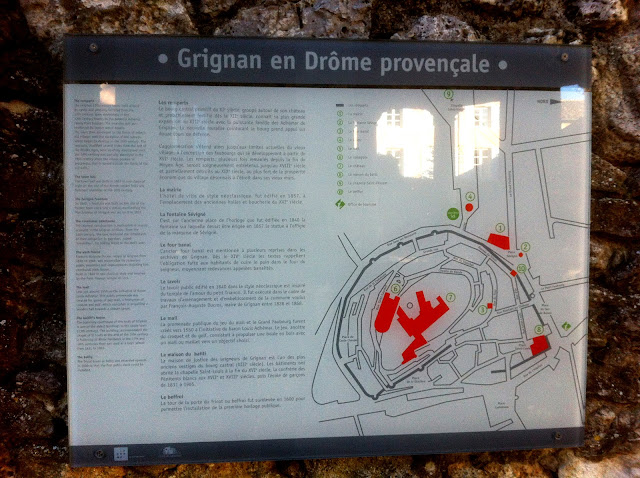On February 26th, 2011, I posted a rather snide, ironical article (you can see it here) on this blog about a French wine appellation in the Rhône valley that had recently changed its name from Côteaux de Tricastin to Grignan-les-Adhémar. Although I stand by my position as to over-long and hard-to-pronounce names for wine regions, I have recently visited this region in the central part of the Rhône valley, near the town of Montelimar, and I now understand much better why it was in fact necessary to change the appellation's name. So, mea culpa.
Sometimes images can be more efficient than words to explain a problem. They are certainly faster and easier to understand. Which of the two images below would you choose to symbolise your wine region?
I think the answer is evident. And it so happens that these images encapsulate the issue here. Tricastin is the name of a region just south of Montelimar. Its name, which goes back to an ancient tribe that lived around there, was duly bequeathed on the nearby vineyards. Then along came a nuclear power station which not only took on the same name, but also started having a few problems. The result on the image and sales of the local wines was dramatic. So the producers put in a request to the French wine gods (Institut National des Appellations) for a change in name. These vineyards actually lie on a rocky geological structure that has nothong whatever to do with the low silt land upon which the power station is built down by the river Rhône, so there is no possible risk of any "leaks" into the vineyard land. But French customers were clearly turned off by the mere association and few of these wines are exported to countries unaware of the situation and the associations.
The vineyards lie on hilly and plateau ground around the village of Grignan and its very imposing château (see above) where Madame de Sévigné dwelt, at the end of her life, back in the 17th century. The original idea was to simply name the wines "Grignan", but infortunately this name had already been taken by a tiny number of producers (one cooperative winery in fact) that turn out some fairly indifferent stuff in the lower vin du pays category. Despite the fact that Coteaux de Tricastin was a fully-fledged appellation contrôlée, and producing greater quantities of better wines, they were refused the right to call themselves Grignan and had to add on the rather ungainly "les Adhémar". French wine law can be anything but rational!
Grignan is a medieval village built on a rocky outcrop around its chateau, which was a fortress before being transformed in the 17th century
This southern part of the Drôme département lies on the left bank of the Rhône and forms the northern outpost of the huge southern Rhône wine region that stretches down to and beyond Avignon, on both sides of the river. The other main agricultural activities here are lavender and truffles. The red wines use a blend of the classic Rhône grape varieties : syrah, grenache, cinsault, carignan, mourvèdre, plus a newcomer, the metisse marselan (a cross between cabernet sauvignon and grenache). Syrah has to account for at least 30% of the plantings, but apparently the producers are free with their blends (thankfully). The white wines, on the increase, use viognier, marsanne, rousanne, grenache blanc, clairette and bourboulenc. Again, the viognier has to make up 30% of plantings.
Lavoir, or wash house, in Grignan
Because of the viognier ingredient, the white wines are quite aromatic. In some cases they can also be a bit too soft for my taste, but the best ones retain freshness and make a very good match for truffle-flavoured dishes, or probably asparagus, although I have not tried that. Being tender and perfumed, they are also very enjoyable on their own. The best producers are Domaine de Montine and Domaine de Grangeneuve.
The syrah component, and the climate, which is a bit cooler than in more southerly parts of the Rhône, provides structure and some degree of freshness to many of the red wines. Some producers even produce 100% syrah cuvées, but the majority use grenache as well and sometimes a bit of the other varieties. The best ones (at least according to the 40 odd wines I tasted blind) are Domaine de Grangeneuve, Domaine de Montine, Château de la Croix Chabrières, Domaine Ferrotin, Domaine Almoric, Domaine Saint Luc, and Baron d'Escalin (Château Destin). There is also some rosé produced.
Château de Grignan
So I wish this young appellation every success in its venture to refound itself, especially as this movement has been abetted by a more stringent set of rules applied to production in order to raise the level of quality across the board. I also hope that they will, in the end, be able to shorten their name to Grignan. The wines certainly offer excellent value for money since they retail for between 5 and 15 euros a bottle in France. I even bought some myself.
all photos by David Cobbold





This is great informative post. thanks for sharing such nice thoughts and experiences.
ReplyDelete